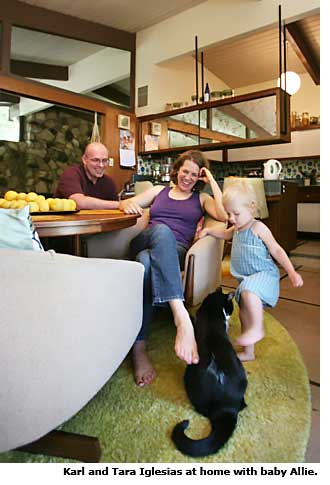'Living Conditioned' Homes of Northridge - Los Angeles
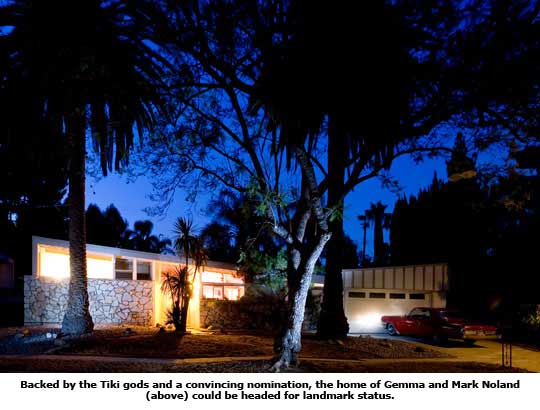
Gemma Noland knew what she wanted—a great modern house in a great modern neighborhood. She just couldn't find one. After a year of scouring Los Angeles, she did find the neighborhood—only to be told by a realtor, "Houses here don't come up often."

So Gemma and her husband Mark made an offer on a 1920s Spanish Revival home. "It wasn't my dream house," Gemma confesses. So she kept scrolling the Internet—at four a.m., no less—only to discover something special.
"Ohmigosh!" Gemma exclaimed. "This is my favorite house in my favorite neighborhood!" They bought it.
How can one explain true love? "I just like the style of the house," Gemma tries. "The butterfly roof is so iconic."
That was four years ago. Since then Gemma and Mark have made as strong an impression on their new neighborhood as it made on them.
The house was in a small subdivision in Northridge, in the northern portion of Los Angeles' San Fernando Valley. Designed in the mid-'50s by the firm Palmer & Krisel for developer Sanford D. Adler, the neighborhood originally bore the odd name 'Northridge Living Conditioned Homes,' and included some of the region's liveliest tract house facades—butterfly roofs, decorative block walls, and ample use of stone.
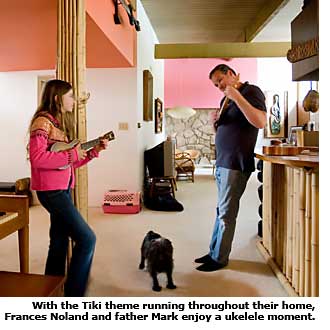
Although its architecture is among the most distinctive in any Los Angeles tract, the neighborhood had lost some appeal over the years due to poor remodeling choices—bay windows, Colonial-style lighting fixtures, garage doors with leaded-glass fanlights, and even the occasional monster home.
"Some of these houses are not the originals anymore," says Maria Biessels, a resident since 1968. "It's really terrible."
Gemma, an organic baker, and Mark, who designs 3-D animation, are determined to rekindle the neighborhood's love affair with its architecture. They've hosted neighborhood get-togethers to talk architecture and are seeking historic designation for their own home. They are not proposing historic designation for the entire neighborhood, but hope to set a good example.
Besides the predictable challenges—a recent tour found that 15 of the neighborhood's roughly 54 original Palmer & Krisel houses have been significantly altered—the Nolands face another.
The tract was once known for its pool parties and pull-back-the-rug dances, but today many people don't know their neighbors. There is no community association. "I wish we had a little more neighborhood camaraderie," says Tracey Hassleim, a resident since 1995.
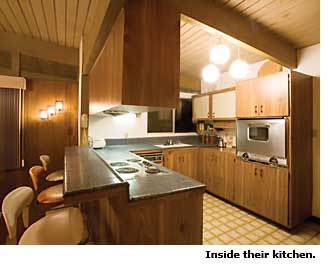
"It's not that it's unfriendly," Biessels says, recalling days when most residents headed young families. "It's a little more distant."
Bruce Madden, a long-timer whose circular pool was once part of the social whirl, remembers block parties and more. "The guy across the street had huge unbelievable New Years Day parties. His wife would cook for a month."
But the Nolands may have what it takes. Besides youth and enthusiasm, they are deeply rooted in mid-century modernism.
Gemma's father dabbled in building design, creating a small modern subdivision in Oregon. The family vacationed in Palm Springs. Gemma grew up haunting flea markets and auction for modern design when she wasn't relaxing at Trader Vic's with her punk rock friends.
She and Mark opened their home in Portland for a local Tiki tour, and have helped organize Tiki tours in Los Angeles as well, one featuring their home. Mark, who also plays a mean ukulele, mixed the tropical drinks.
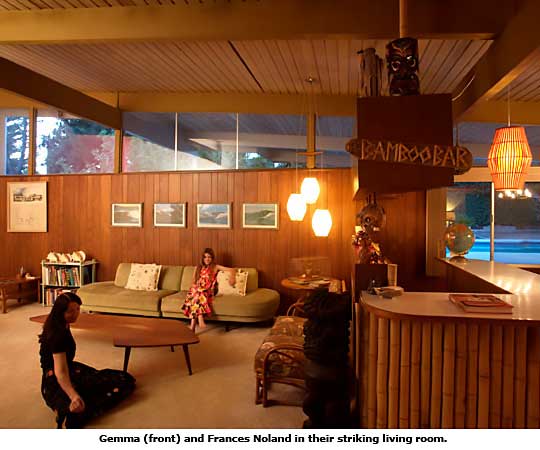
To understand how miraculous it was that the Nolands came to own their present home, it's necessary to understand that it came partially furnished with a built-in bar and several original Tiki-themed artworks manufactured by Witco, the gold standard among Tiki designers. "The coolest," Gemma says, is a Tahitian maiden that was installed by the fireplace by the home's prior owners in the late 1950s. "For Sven to find it in situ like that is really important," she says of their friend Sven Kirsten, who literally wrote the book on Tiki culture, 'The Book of Tiki.'
